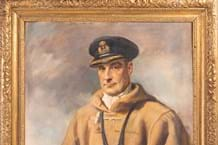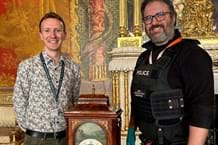Over 100 million children, three-quarters of them in the Commonwealth, do not have access to primary education, as the Governor of the Bank of England, Sir Edward George, tells us in his introduction to the catalogue, which is surely destined to become a collector’s item. More affectionately celebrated as Sir Eddie, he hosted what was a very worthwhile junket. All the notes were in mint state. Spink waived the buyer’s premium, which is good of them as they must have had some expenses. Our national bank deserves our gratitude for arranging the provision of the notes.
The sale consisted of 194 lots of low number but otherwise ordinary current banknotes. These very low numbers are eagerly sought after by a certain type of collector, a happy band who raised a total of £34,150.
The highest price was achieved by the very first lot, which was a good strategy because it set the tone of the sale. The estimate was just £300-350 for a fiver of the type first issued last May. It was perfectly ordinary save that it bears the magically low number: 000005. It made a worthy £1150. The same note with the numbers ---6 and ---7 and the same estimates made £600 and £1050 respectively. This anomaly serves to demonstrate that a spirit of generosity rather than a sense of rarity prevailed.
The sale ended with several lots of groups of notes signed by the Chief Cashier, Merlyn Lowther. Well, of course all these notes are signed by the Chief Cashier but these were additionally signed in holograph. The last lot of what must have been a very jolly evening was a set of £5, £10, £20 and £50 notes signed thus and with single digit numbers. The face value was £85 but they had an estimate of £500-700. How does one estimate such lots? With difficulty it seems. They are crisply preserved, £1500 having been parted with for them. Perhaps they paid cash; it is all a numbers game.
Noteworthy charity bash
The Bank of England Museum was the host and Spink were the auctioneers on Friday, January 24 at one of the most unusual sales seen in London. It was a sale of special number Bank of England notes sold to bolster the funds of the Commonwealth Education Fund.




